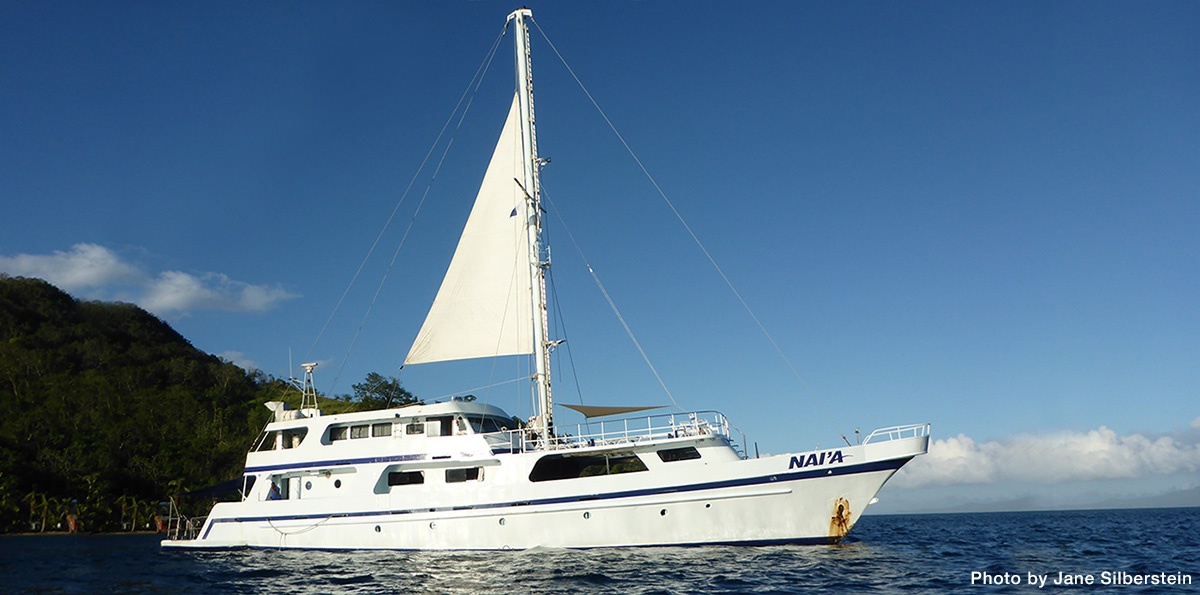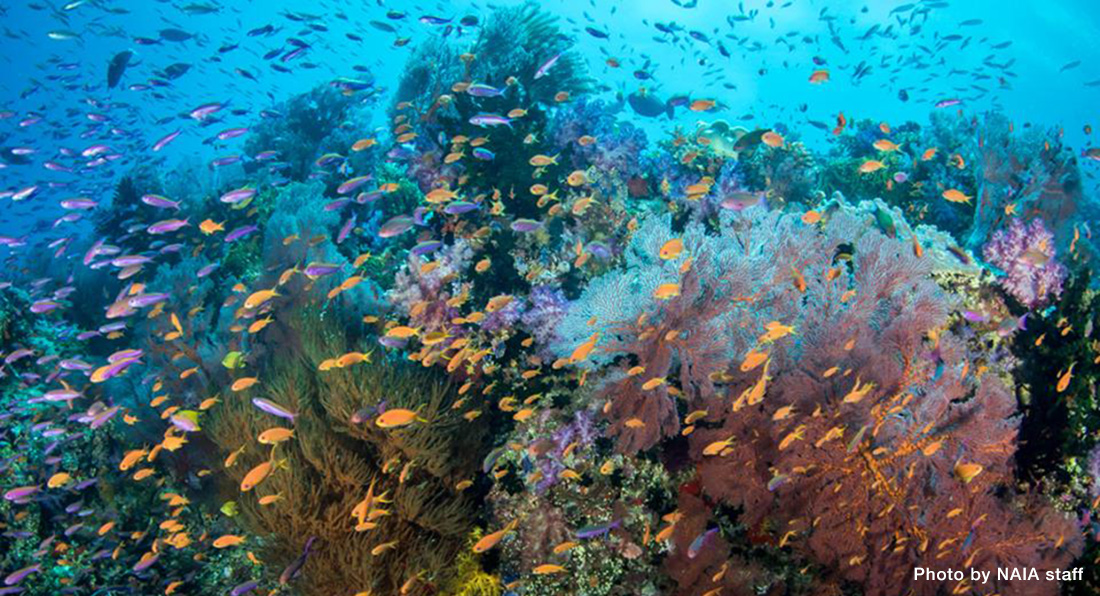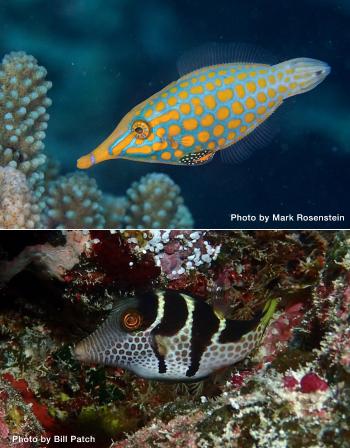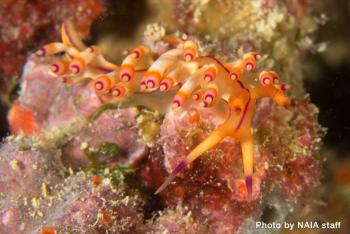
As an interpreter for the Monterey Bay Aquarium I’ve spent 30 plus years reveling in the beauty and diversity of the invertebrates of Monterey Bay. I’m known affectionately as the “worm lady” to the aquarium guides and staff, due to my love of ocean worms and other invertebrates (I did my Master’s thesis in the mudflats of Elkhorn Slough, our local wetland). I’ve only dreamed of diving in places like Fiji, but this spring a free space opened up on a 10-day live-aboard scuba diving boat, the NAIA. It was with my good friend, and mentor, Dr. Steve Webster, who was leading a group of 16 people to explore the reefs of Fiji.
During my first two days’ scuba diving in Fiji it was like entering a magical realm of such intense beauty and such vivid colors, I found myself completely awestruck. As an interpreter/educator/marine biologist I am used to talking – a lot, about what I’m seeing and teaching others, for the first time I was very quiet. Looking back, I realize I was trying to capture the essence and describe all that I was seeing and feeling. But there was no way to truly capture this with words - it was more like art, but much grander and more gorgeous. The Living Coral Reefs I was absorbing were more beautiful and magnificent than anything I had ever seen.

Looking at the incredible diversity and abundance of the marine invertebrates of the reefs made me think of the Shape of Life programs, which have brought a whole new dimension to my teaching of marine science. For an invertebrate geek like me, the series has been a dream come true. I’ve been able to show people the detailed lives of these unknown animals in a way never before achievable. The coral reefs of Fiji were like a living Shape of Life series on steroids!

Imagine seeing living corals that were possibly 3,000 years old, a huge coral head the size of a large room (30x30 feet in diameter and 25 feet high) that has been keeping up with climate change as the waters of the sea have risen.
I have to admit to becoming completely enthralled by the fishes of the coral reefs of Fiji. They not only come in every color, size, and shape imaginable but have personalities to match! The coral reef is such a dynamic, ever-changing place with predators both day and night so the evolution of different body/mouth types is fascinating to watch. The vast diversity of the coral reef is astounding.
Once you start close observation of the pulse and natural flow of the reef teeming with interdependent relationships, it is spell binding. Every square mm of the reef is covered with living animals and algae – mainly corals. I’ve never seen the brilliant purples and magentas and yellows that I saw on the reefs on Vatu-i-Ra. The soft corals are magnificent. I’ve spent most of my career looking at small animals like hydroids and bryozoans, it was very rewarding to see my familiar friends, like this sea slug on a colony of hydroids, in Fiji.

It was amazing to watch Big Mo (as Moses, the Fijian dive master and a chief in his home village, was called) finding tiny shrimp clinging to gorgonians, tiny nudibranchs and pygmy sea horses.
A highlight of the trip was spending time in conversation with Judith Cefkin, the American Ambassador to Fiji, Kiribati, Naruru, Tonga, and Tuvalu. What struck me the most about my time with the Judith and the wonderful, warm, kind Fijian people is how tragic it is that the greatest effects of climate change are happening to those who deserve it the least. Following cyclone Winston in February of 2016, Fijian Prime minister Frank Bainimarama stated, “we in the Pacific are innocent bystanders in the greatest act of folly of any age. The industrialized nations putting the welfare of the entire planet at risk so that their economic growth is assured and their citizens can continue to enjoy lives of comparative ease. All at the expense of those of us in low-lying areas of the Pacific and the rest of the world.” He went on to say that “Three of our Pacific neighbors, Kiribati, Tuvalu and the Marshall Islands, are destined to physically sink beneath the waves altogether”. This cyclone was the biggest storm ever recorded in the history of the Southern hemisphere! The category 5 storm had waves up to 36 feet and winds to 325 km/hr.
Climate Change / Ocean Acidification and the Coral Reef
In looking at the climate change and ocean acidification, the animals that build their skeletons out of calcium carbonate will suffer. Still, the most important thing to remember is that this world is filled with brilliant, compassionate people who are actively working on solutions to these problems.
This amazing adventure has inspired me to work even harder on these issues. I know that if we all find ways to get active in our communities to find big solutions for climate change we WILL find solutions as we did in the 60’s and 70’s with pollution. I find comfort knowing that Paris Agreement (United Nations Framework Convention on Climate Change) was signed by 177 UNFCCC members. If we all do our part to find not only personal solutions to reduce our carbon footprint but collectively, find community-wide solutions like a Carbon Tax, we will make a huge a difference.
I hope you enjoyed riding along on my journey, I wish you all the best in yours.
About Jane
Jane King Silberstein is a marine biologist/interpreter and artist who has worked at the Monterey Bay Aquarium for nearly 30 years. Jane’s passion for the sea and the extraordinary life forms within drove her desire to teach others about these ocean wonders and to capture the beauty in her art.
Jane serves as a senior interpreter and trainer for the Aquarium volunteers, and has played a lead role in the Teen Conservation Leader program. Jane graduated from the University of California, Santa Cruz and earned a Masters degree from the Moss Landing Marine Laboratories.
She lives by the shore of Monterey Bay with her husband Mark and twin sons, Josh and Ian.















